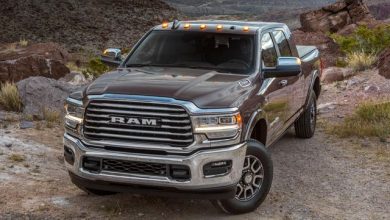3 Signs You Need To Avoid Another Vehicle

When it comes to safety while driving, a lot is said about taking ownership of your own behavior.

There’s good reason for that, too. After all, you can only control yourself; there’s no way of assuming control of what other drivers do, so you’re best to focus on your own efforts. Protecting safety thus becomes about avoiding bad driving habits and keeping your car well-maintained so as to prevent mechanical faults, because these are the issues that seem to be under a person’s own remit.
However, there is another facet to keeping safe on the road, and one that many people overlook. As well as ensuring you’re doing everything that you should be, you also have to focus on other drivers, which means you need to know what to look out for. While you can’t control what other drivers are doing, you can control your reaction to them– and make sure you avoid them if the signs aren’t looking good.
Here are three signs that another driver is one to be avoided, so you can protect your own safety on the roads at all times.
#1 – Driving too slowly
Many of us associate driving too quickly as the main problem we may experience from other drivers on the road. No one likes the feeling of being overtaken, or hearing the roar of an engine as they accelerate away from a light alongside us. It’s discombobulating to see other people so flagrantly breaching both road etiquette and the law.
However, driving too slowly is just as dangerous as, if not more so than, driving too quickly. In fact, in some states, driving too slowly is actually a ticketable offence, as pointed out on nytimes.com. There are two reasons that people drive too slowly:
- Hesitance
When people aren’t sure where they are going, or are feeling overwhelmed by the sheer volume of traffic, then they will usually slow their pace to a crawl. Hesitance is generally a dangerous thing for drivers and can, in and of itself, be a cause of accidents. Drivers have to be decisive and flexible when they’re on the road.
- Driving under the influence
When someone is driving under the influence of alcohol or drugs, they are more likely to slow their speed as they know they are at a higher risk of accidents. They may not even know that they are driving slowly — alcohol tends to impair our ability to comprehend speed — or they may be doing it as an additional safety measure.
If you encounter a vehicle that’s driving too slowly, it doesn’t particularly matter why this is happening– it just means that you need to get out of the way as quickly as possible. If a driver is hesitant — and thus not capable of making the best decisions — or under the influence of a substance, then the matter is very simple: you don’t want to be sharing a road with them.
If you’re behind the vehicle in question, then slow down yourself or change your route. This is inconvenient, but being stuck behind a vehicle that is being driven by someone who shouldn’t really be on the road is even more inconvenient. If you want to overtake, make sure the road ahead is clear and you are able to do so safely before proceeding– you don’t want to swap one dangerous circumstance for another.
#2 – Weaving in and out of lanes
Sure, we all have moments when we lose our concentration and our lane discipline isn’t quite as good as we might hope. However, if you are driving near a car that seems to be consistently struggling to remain in the right lane, that’s a bad sign.
You’ll most likely see this when driving behind a car. If they are slipping over the road’s dividing line regularly, then you’ll want to slow down and ensure you give them plenty of space. Keep in mind stopping distances, too; if they can’t manage to keep their vehicle pointing in the right direction, then there’s no guarantee they’re not liable to suddenly jump on the brakes and potentially cause an accident.
#3 – Tailgating
Tailgating is always difficult to cope with. It makes everyone feel stressed, panicked, and just outright like they can’t deal with what’s happening on the road– why people do it is a mystery.
Not only is tailgating incredibly annoying, it’s also incredibly dangerous. The lack of distance between you and the vehicle that is tailgating you means that if, for some reason, you were to suddenly grind to a halt, then you’re almost certainly going to find yourself rear-ended. There is also the inherent danger of you worrying about being tailgated, more distracted by what’s going on in your mirrors than what is in front of you.
Certain vehicles may tailgate you without even meaning to. Some trucks, for example, don’t have the visibility over the hood that lets them see how close they are getting. It’s good to know this is the case — and the truck driver is not just being reckless — but it’s still a dangerous situation that, if the worst comes to the worst, is going to require the assistance of the likes of craigswapp.com in the aftermath of an accident. You’re still going to need to take evasive action to avoid the tailgater.
The best way of doing this is simple; slow down, or outright stop (after indicating your intention to do so) and let the tailgater pass. Yes, this is annoying and an inconvenience, but it’s definitely the better choice than just continuing to get more and more annoyed and risking an accident as a result.
In conclusion
If you notice a vehicle on the road displaying any of the signs above, then your best action is always going to be to get out of their way. There may be a completely harmless reason for their slip from normal driving etiquette, but this is definitely a scenario in which you’re always better to be safe than sorry. Ultimately, protecting your own safety is about both ensuring you are driving correctly and steering clear of potentially problematic road users– if you can master this double act, then your safety on the roads – and that of others – will be far more likely to be maintained.





